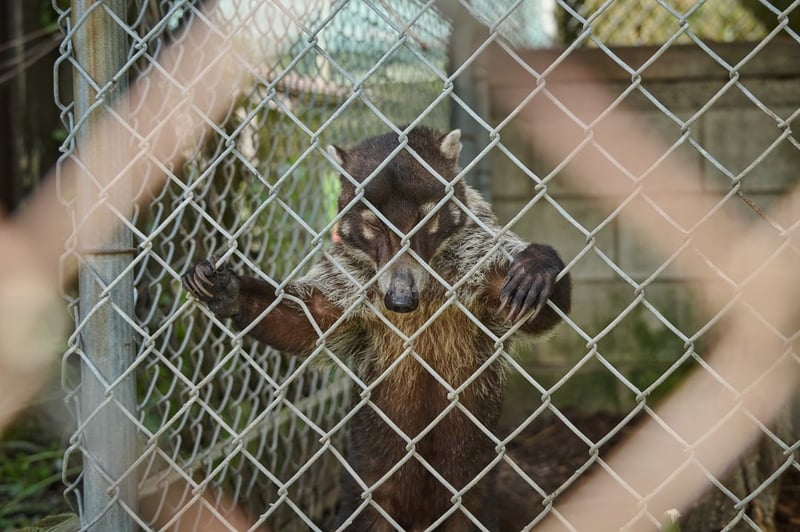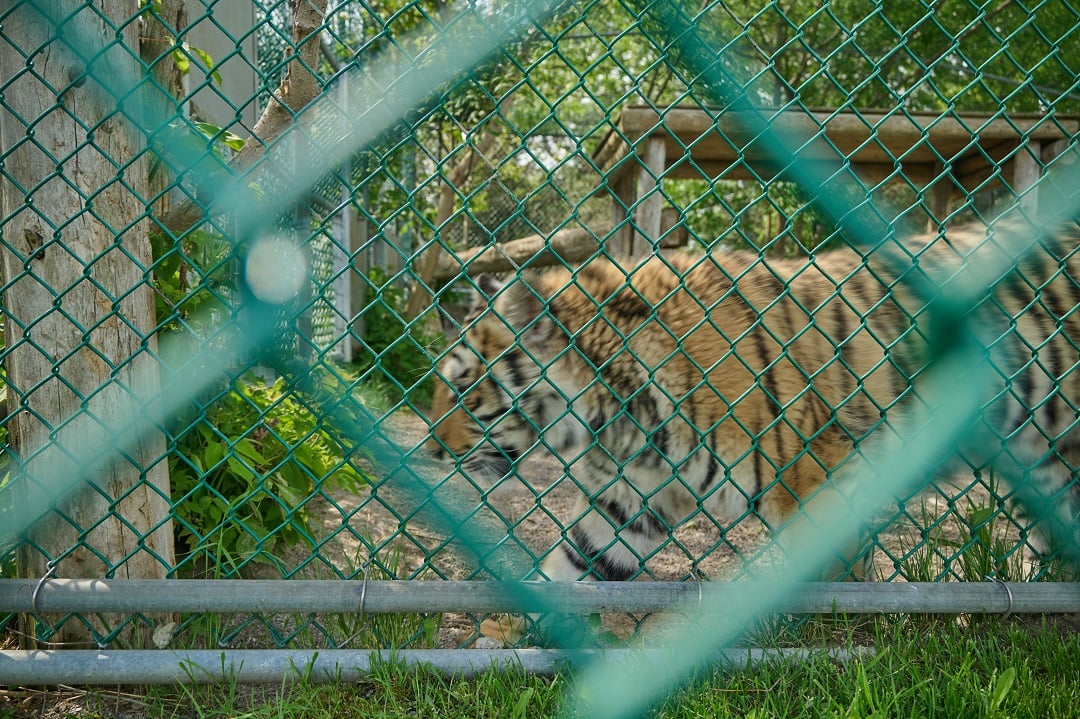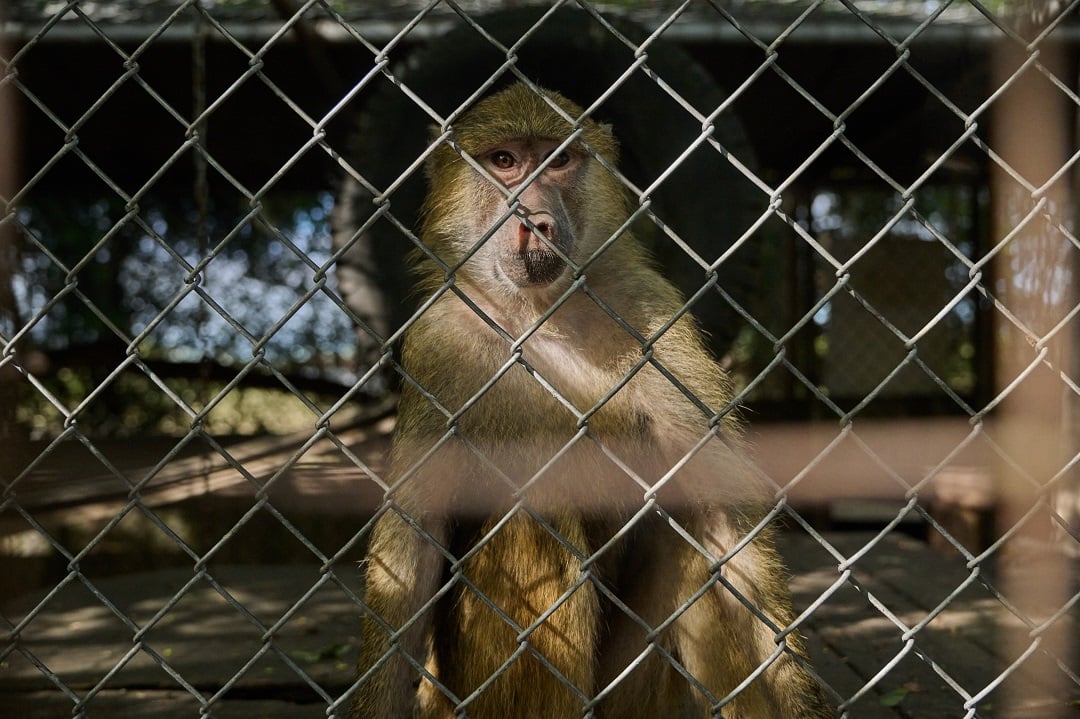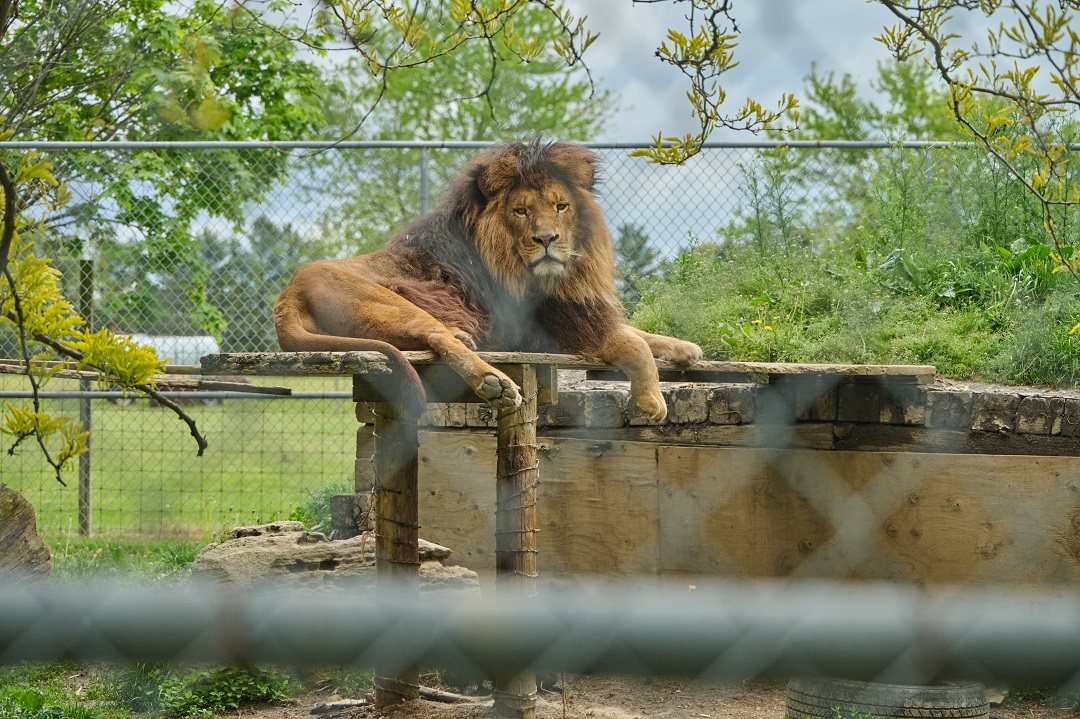
Behind the lens, I witnessed restless pacing, barren cages and heartbreaking suffering in Ontario’s roadside zoos.
Over the course of 10 days, Erin – our Wildlife Campaign Manager – and I visited multiple roadside zoos across Ontario (read her account of our visits). While she took notes and documented what we saw, I was there with my camera – to capture the reality these animals face every day.
We didn’t wear hidden cameras or trench coats. We simply arrived and bought our tickets like any visitor might, ready to see the animals. While we may have looked like any other visitor on the outside, inside I was filled with dread about what I was about to witness.
These are the images – and moments – I’ll never forget:

A young tiger paces a worn path along the edge of his barren enclosure.
We stood watching this tiger for a long time, hoping he might break the pattern. But he didn’t. He walked back and forth, back and forth – the grass worn down to bare dirt, the pattern etched in muscle memory. Photographing this moment felt intrusive, but necessary.

A baboon sits in a barren enclosure, staring out at me through the fence.
I remember the moment I took this photo – how still everything went when we made eye contact. It felt like someone was asking me for help. I pressed the shutter, then lowered the camera. Sometimes documenting feels like witnessing and failing all at once.

A lion lies on a worn wooden platform inside his enclosure.
I remember feeling uneasy standing there. The fence separating us from this massive predator wasn’t high – maybe three meters at most. I kept thinking how easily this dangerous cat could clear it if he were motivated. This wasn’t just sad, it felt unsafe. And yet, under current Ontario laws, this setup is completely legal.

A red fox lays listlessly in their DIY enclosure.
There was something in their stillness that felt heavy – like they had already given up. No pacing, no alertness, no spark in their eyes. Just silence. It felt like resignation.

A striped skunk reaches out for a peanut.
Of all the animals we saw, this one will stay with me the longest. The skunk had been pacing relentlessly, circling their tiny enclosure in a loop that felt frantic and desperate. We watched as a guest offered a peanut. We hoped this might break the cycle – and for a brief moment, it worked.
But then the pacing began again. This is what suffering looks like.
And it wasn’t just this skunk. Across every roadside zoo we visited, we saw wild animals pacing, circling, biting fences and showing other signs of psychological distress.
This isn’t just boredom, it’s trauma. These repetitive movements, called stereotypies, are coping mechanisms animals develop when they’re trapped in environments that don’t meet their physical or mental needs.
Watch the footage for yourself. This is what a life in roadside zoos looks like.
It’s hard to watch. Even behind the camera, it was hard to look directly at the reality in front of us. But it doesn’t have to be this way.
How you can help captive wildlife
At World Animal Protection, we’re working tirelessly to change the laws that allow this to happen, but we need your support:
📢 If you live in Ontario, contact your MPP and urge them to support the Captive Wildlife Protection Act – a bill that would introduce mandatory licensing, inspections and animal welfare standards for all zoos in the province. (Find your MPP and their contact info here)
🐾 Take the pledge to never visit a roadside zoo. Your voice matters – and your choices help protect wild animals from a lifetime of suffering.
Together, we can make a difference for animals.
Banner photo: A coati grips the chain link fence of their enclosure at a roadside zoo in Ontario. All photo taken by Sasha Rink for World Animal Protection.